Maya Hayuk Interview
Does your Ukrainian identity affect the personal importance of this piece?
The significance of this installation relates to the process of working through the trauma of being a Ukrainian who lives in America. One who is unable to be an actual soldier or a medic on the ground.
I have been thinking a lot about the PTSD of my people; everyone who’s over there in Ukraine dealing with this. It was my way of trying to imagine that. But also, within that trauma, painting is very healing. I had to do something and keep going.
Frontline Flashpoints Facing East, Ukraine is placed in the Beaux Arts Hall of the Brooklyn Museum. The hall is obscured by archways. So, there’s no point that the viewer would ever see the entire, 70-foot installation. You’d walk by it, and you’d see it from different viewpoints, but you’d never be able to see the whole thing in one contiguous form.
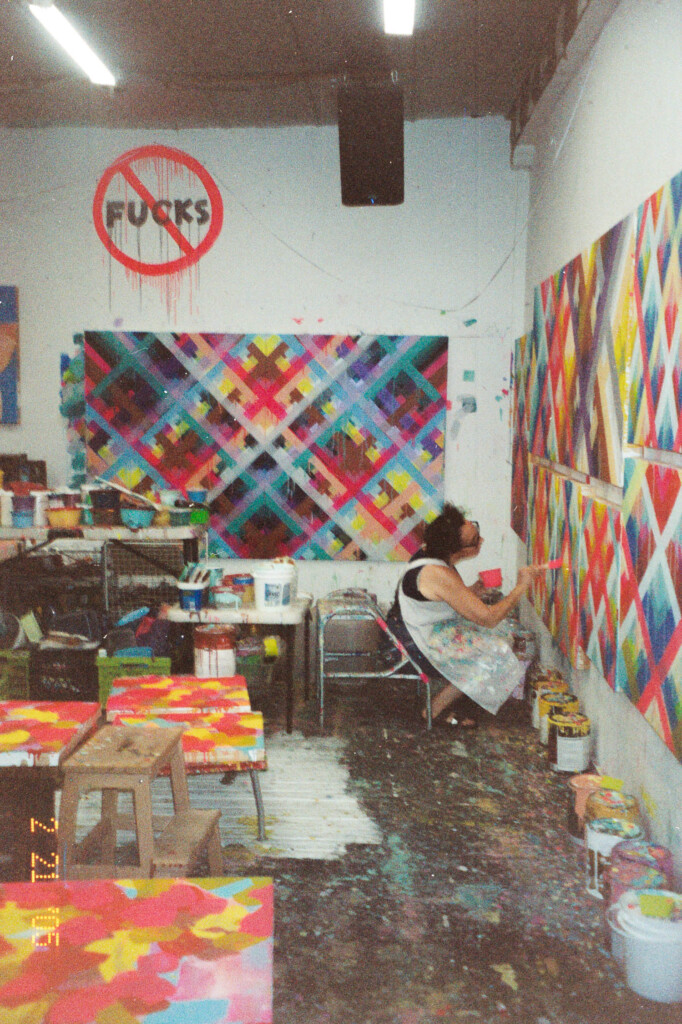
Other than your heritage, what is your personal experience of Ukraine?
I traveled all over what was then the Soviet Union, with my father, who was a political geographer. I studied at the University of Odesa in Ukraine and made a couple of other trips there. Then, once the Soviet Union dissolved, and Ukraine became a free nation; my mother moved back to Ukraine – which would have been the hope and dream of her parents. She splits her time between San Francisco and Lviv, Ukraine. I’ve been back there to visit her. I’ve gone back to the village where she was – where she grew up in the Carpathian Mountains.
I really look forward to going back as soon as it’s safe and possible.
You have the specific experience of being a first-generation American from an immigrant family. How would you say that has shaped your view of the world and your identity?
Well, like a lot of Ukrainians of my generation, who are children of people who fled during World War II (and were lucky enough to escape); I grew up as a Ukrainian, first. I spoke Ukrainian at home and then went to American schools. So my whole life then felt, and still often feels, like these two parallel lives. I share this feeling with a lot of other Americans. Every Saturday, I had my Ukrainian life, where I would hang out with my Ukrainian friends. I went to Saturday school and studied Ukrainian grammar, history, literature, and things. Every summer, I went to a Ukrainian scouting camp called Plast. But, during the school year, I was like any other American.
My American friends definitely did not understand my other side.
As a child, it was really troubling because Ukraine was under the control of the Soviet Union, and there is a tendency for Americans to not really understand what the difference is between Ukraine’s SSR, Russia’s SSR, or Estonia’s SSR. They just thought of it all as Russian.
One of my nicknames was Commie when I was a kid.
Which was really messed up, hurtful, dissonant, and weird. As time goes by, there are more waves of immigration from all over the world. It’s one of my favorite things about New York; there are people that come from all over the world, but all have very similar backstories – really troubling stuff that I can relate to. I feel very lucky to be here.
I keep trying to remind my friends, especially in the United States; we don’t know what it feels like to have a front line.
The length of the front line in Ukraine is equal to the distance from Boston to Miami. Imagine a war of that size in America. Most couldn’t fathom that.
What was your first reaction to the news of the invasion? What was your thought process like?
When February 23rd rolled around – we all knew that Putin was going to invade. But he was holding his cards kind of close to his chest. So it was anyone’s guess.
That evening, I stayed up. I had the news going, and the bombs started dropping at about 2 a.m. I was awake for four days straight after that first night.
The TV was always on. I would doze off a little bit and then wake up again. I was in shock. I knew it was going to be bad. I don’t think anyone could have imagined that Putin was going to try to take over so much land all at once.
I kinda lost my mind.
Since that time, I’ve found other Ukrainians – some of whom I hadn’t spoken to in decades. We found each other again. Immediately, we started checking in with each other. Support group Zoom calls; trying to figure out who’s safe, whose family needs help, how to get this and that there. Luckily, there are some incredible organizations, especially in New York.
Watching little children who were four years old; confused, getting separated from their parents, and crying. Just thinking, that’s my mom. That’s my dad.
These kids are going to be suffering for their entire lives. You don’t get over that.
My parents suffered from PTSD and it’s still in them.
There is a generational trauma that gets passed down and it’s in me as well.
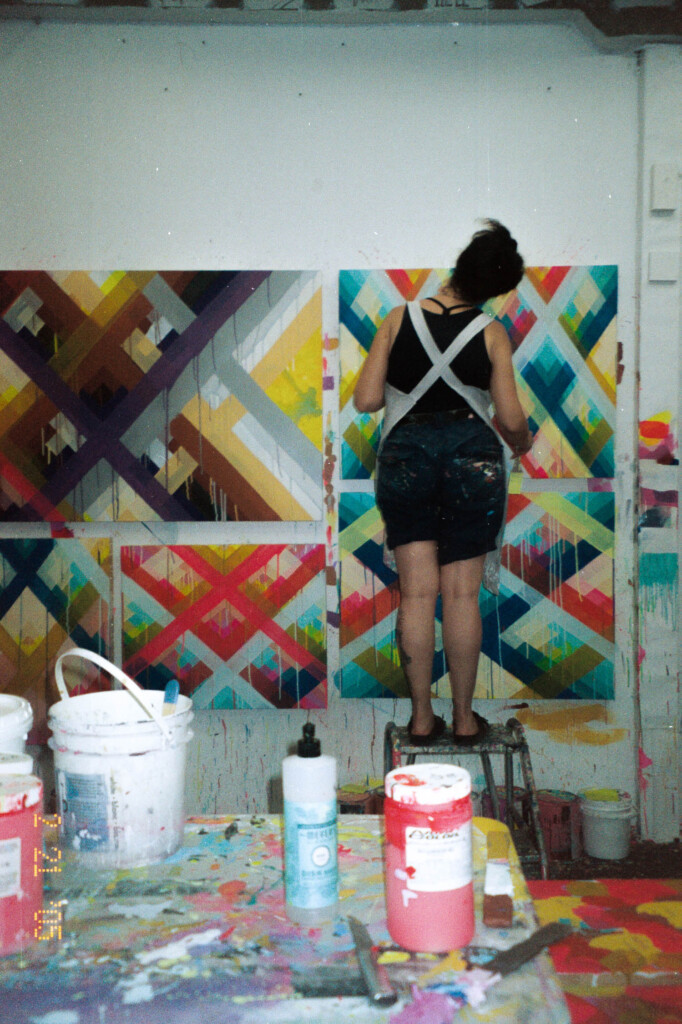
As terrible and devastating as that is, does it feel good to be able to give back or raise awareness with this installation?
Working in the Brooklyn Museum on this specific piece gave me a very clear focus on what I wanted to talk about and make.
There was no question of what the piece was going to be. All the parts were painted since this past February. They are all based on the Ukrainian flag and the Ukrainian trident. The trident is also the tattoo on my chest. So, my focus has become that much stronger.
I had to find a place in my studio where I’m able to work through all of these really dark thoughts and feelings. In some way, it helps me cope.
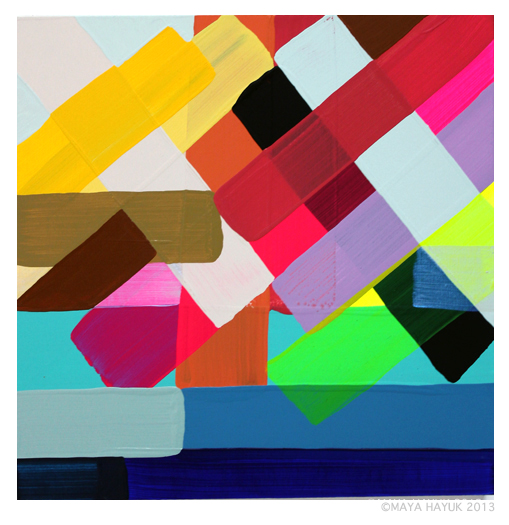
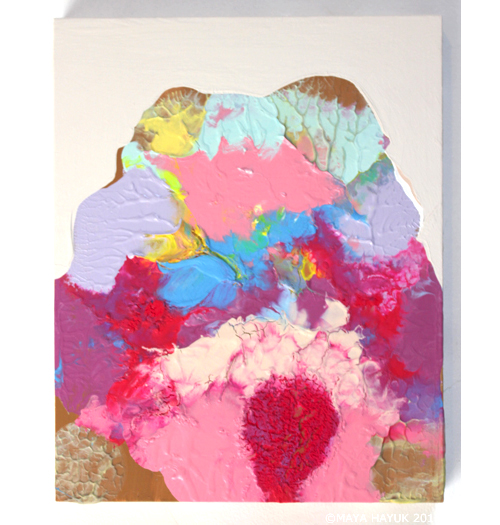
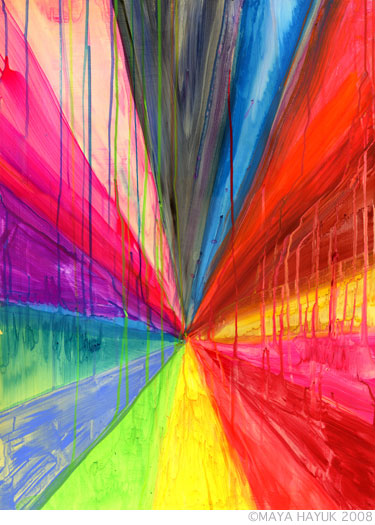
What are some of the things that you have to consider before you start a piece like Frontline Flashpoints Facing East, Ukraine?
The first one is usually time; how much of it do I have, and what is the deadline? How much time do I have to work on this? What materials do I have? What do I have access to? I can dream really big, but is that rational or realistic?
The idea of working off of the explosions of the front lines – I literally can’t think of anything else that I could have done. That’s the idea. I know what I need to do.
Every single painting follows its own logical patterns and systems. I play a lot of Sudoku, and I’m into placing things where they belong.
Eventually, the paintings tell me what they need.
I think of it a little bit like waitressing when you have a whole restaurant full of tables. Each one of them needs the basics: the plates, the knives, the glasses. Then they each order different things. You go around the room and give everyone what they need. But then eventually someone’s going to want hot sauce.
I thought about that quite a bit. I’ll walk around the room and I’ll stop at each painting and I’ll say, “What do you need?”. And suddenly, oh my God, I’m a waitress again!

What are you hoping to achieve with this project? What would you like the answer to be to the questions that you’re asking?
I like to ask the question, and then hope it brings up more questions.
I don’t know if I’m going to solve anything.
I don’t think I’m going to make Putin suddenly die or something as a result. I mean, that’d be cool if a painting could do that.
I don’t know the answers.
So, let me try this, or let me try that.
For Front Line, I hope that people read the title and understand, specifically, what it’s for. Oftentimes with abstraction, yes, the viewer feels and derives whatever they want from the work. Maybe bright colors are really sad for some people. I don’t know. That’s for the viewer’s participation.
I was thinking very specifically about the Ukrainian flag and this new word that I learned, Vexillology; the study of flags. My dad taught me it, and I love that word. So, I think about the study of flags, and what the minimalist flag of Ukraine stands for. I was thinking weirdly about Guernica. Back in the day, we looked at Guernica as something that was very narrative. My hope was to make something that expresses a psychedelic explosion…the flash points of: pop, pop, pop.
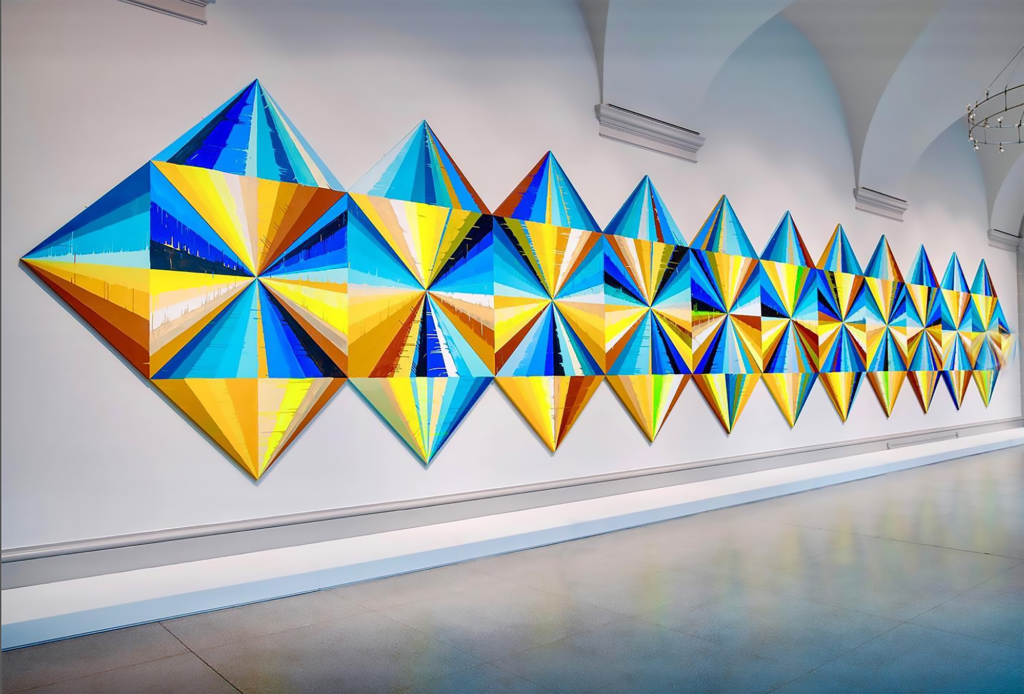
I hope that it will open a conversation, and hopefully raise more questions. Maybe give me the footing to work more deeply into how art can affect change, and how art can curb tyranny and genocide. Can art even do that?
At least when people get together and talk about these concepts, then there is room for those conversations to blossom. I play such a small role, you know? I mean, that’s the funny thing. Art is so deeply celebrated, but I feel like I’m one tiny little drop of something; one that may, or may not, affect some change. Jury’s out.
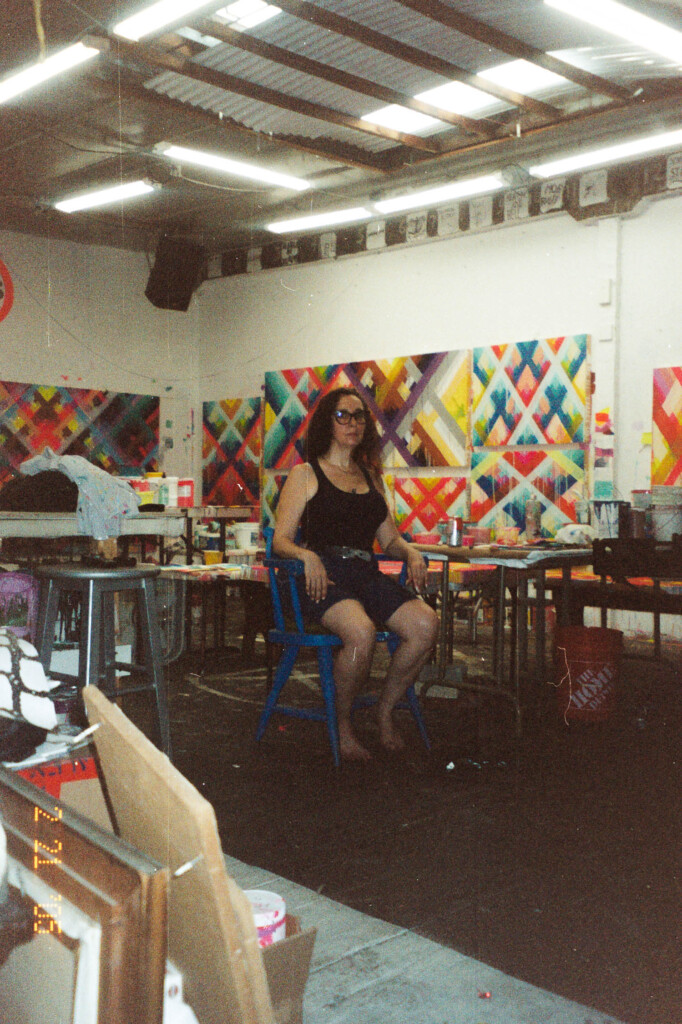
MORE MAYA





